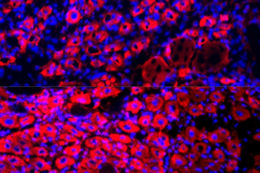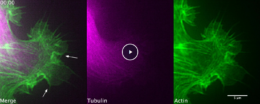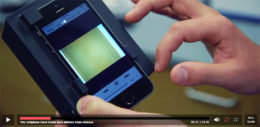Posts Tagged ‘faculty’
Head-Gordon receives COVID-19 research award
Congratulations Professor Teresa Head-Gordon, who has just been selected for one of the new C3.ai Digital Transformation Institute’s awards for research projects to mitigate the COVID-19 pandemic. Head-Gordon has been funded for her project, “Scoring Drugs: Small Molecule Drug Discovery for COVID-19 Using Physics-Inspired Machine Learning.”
Read MoreA new test can see, almost literally, infectious bacteria
Up to 20% of urinary tract infections, caused by a resistant microbe known as ESBL-producing bacteria, don’t respond to conventional antibiotics. Professor Niren Murthy and colleagues have developed a 30-minute, low-tech test, called DETECT, to identify ESBL-producing bacteria on a patient’s first visit to the doctor.
Read MoreDiluting blood plasma rejuvenates tissue, reverses aging in mice
New research from Professor Irina Conboy found that diluting the blood plasma of old mice has the same or stronger rejuvenation effects on the brain, liver and muscle as surgical pairing with young mice or young blood exchange. This discovery shifts the dominant model of rejuvenation away from young blood and toward the benefits of removing age-elevated, and potentially harmful, factors in old blood.
Read MoreHead-Gordon leads COVID-19 Drug-Delivery Simulation Repository
The Molecular Sciences Software Institute (MolSSI) has launched an open-source website that will allow biomolecular scientists from around the world to share computer-aided drug-testing simulations targeting the protein at the center of COVID-19. Under the leadership of MolSSI co-director Teresa Head-Gordon, a MolSSI team started work on the COVID-19 website in April, after scores of scientists began discussing ways to share simulation modeling data they had on the coronavirus.
Read MoreScientists pivot to COVID-19 research, hoping for quick results to deal with pandemic
Professors Patrick Hsu and Niren Murthy are featured with the emergency funding they have received for urgent COVID-19 research. Hsu is working to apply new CRISPR tools he has discovered to a faster and better diagnosis of COVID-19 infection and potentially new therapeutics, while Murthy is looking for weaknesses in the SARS-CoV-2 proteins that could be leveraged by a small molecule, hopefully knocking out the virus.
Read MoreKumar Lab discovers new mechanism that tumors use to adhere and migrate through brain tissue
Sanjay Kumar’s lab has identified a mechanism used by tumor cells to adhere to and migrate through a nanoporous, three-dimensional extracellular matrix characteristic of brain tissue.
Read MorePatrick Hsu explain antibody test validation on CNN
Professor Hsu appeared on CNN Tonight April 29 to explain the results of his work on COVID-19 antibody test validation with the Covid Testing Project.
Read MoreFletcher Lab partnership with Gladstone Institute on COVID-19 testing
Professor Dan Fletcher’s lab is partnering with researchers at the Gladstone Institutes to develop a fast, inexpensive field test for COVID-19 that uses mobile phone technology and RNA analysis.
Read MoreAdam Arkin leads new national lab team to improve COVID-19 testing
A consortium of national labs has formed five teams to conduct R&D to help improve the nation’s COVID-19 testing capabilities. Professor Adam Arkin leads a team developing computational approaches to develop and optimize COVID-19 diagnostic tests, detection methods, and other applications.
Read More








